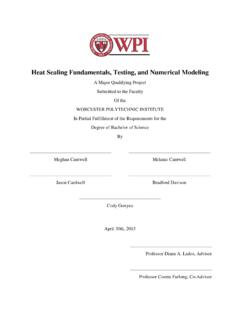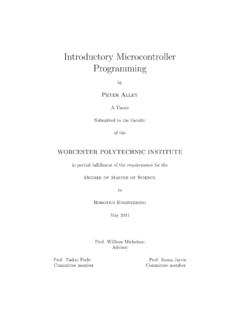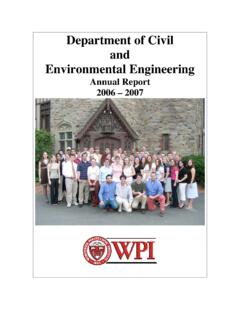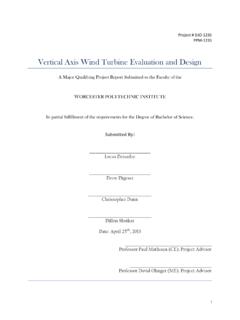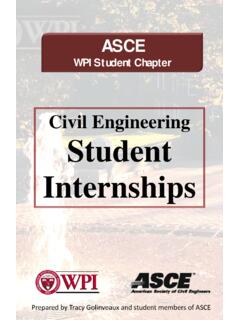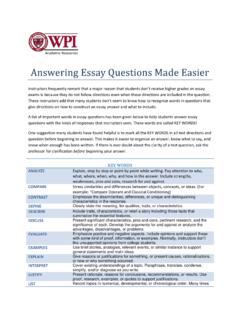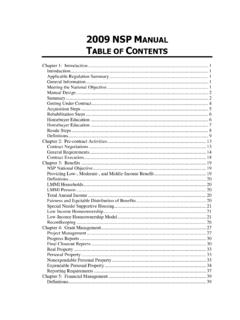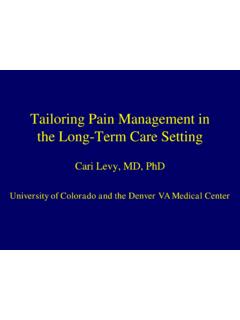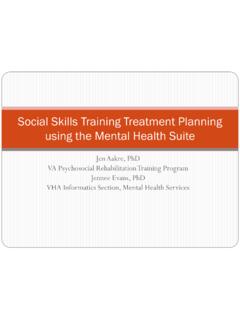Transcription of Interactive Qualifying Project Report completed in partial ...
1 DESIGNING A COMMUNITY VEGETABLE GARDEN FOR AIDS Project WORCESTER Interactive Qualifying Project Report completed in partial fulfillment Of the Bachelor of Science degree at Worcester Polytechnic Institute, Worcester, MA Submitted to: Professor Robert Krueger (advisor) Professor D. Richard Brown (co-advisor) In Cooperation With Joe McKee, **; Martha Akstin, **; Priscila Rodriguez, ** AIDS Project Worcester Julius Jones, ** Regional Environmental Council Robert Grady Lee Hermsdorf-Krasin Jason Reynolds Evan Sawyer March 5, 2010 _____ Advisor Signature _____ Co-advisor Signature Executive Summary- A community garden can often be a profound way to connect communities and link them to significant change. These programs have endless positive effects within these communities and can be instrumental in providing people with sustained access to healthy foods. They can be help rehab former industrial sites and can bring people together in common purpose.
2 This powerful force is experiencing resurgence all over the country. We hope our work on this Project will help organizations, like our sponsor, to realize and tap into this growing network of positive benefits and collaboration. This Project is aimed at creating a nutritional resource which will be used to enhance the health and well-being of a group of people. A community garden will be a foundation of positive change within any community. It provides access to healthy foods, growing and nutritional knowledge, as well as a productive outlet for the community. A well-reasoned garden implementation plan will establish all of the specific information necessary for initiating a community garden. In addition, to this resource we have also created a prototype garden. These materials are designed to consider and inform every minute or major step of creating a new garden space. The prototype is an example of our best recommendations. It is prepared to clearly, visually depict how the garden would be organized under these ideal recommendations.
3 Consultation of these materials will make the consideration and decision making process for the garden much simpler and straightforward. Our biggest goal in this Project is to ensure that we create a single informational source which is whole, well-reasoned, durable, and attends to all the considerations of creating a community garden. Goals- For this Project we identified several important goals which we believed would direct the success of the Project . The first and most important goal was to provide our sponsor, AIDS Project Worcester, with a comprehensive handbook and visual prototype garden that they could use to guide them through the complexities of establishing a community garden. This goal has many other objectives which will be discussed later on. These two resources are the major deliverables of our Project and contain all pertinent information which guided the Project over the course of seven weeks. Each document, when used in conjunction, will make each step for APW clear and obvious.
4 These documents are hand-tailored for the needs of APW and its clientele, but are by no means restricted solely to this use. Each resource has detailed information specific to the Worcester area which could be adjusted slightly to fit the needs of any organization looking to establish a community garden. The full realization of this Project and these goals will come through continued use and adjustment of our garden manual and prototype garden. Objectives- There were many varying research avenues which needed to be thoroughly investigated to fully understand and inform all of the many arenas associated with this goal. These objectives ranged from site location to nutrient compositions. We had to concentrate our attention first into understanding some of the nutritional needs of the clientele at APW. We used this information to create a food list which was specific for the overall nutritional needs of this population. We created lists of foods which detailed yields and climatic information.
5 The intersection of these various informational arenas produced a list of crops which we ranked. The ranking system is the final stopping point for one to establish the best crops to grow in this area; which ones are most beneficial and which are more fringe. This system allows one to examine all of the relevant plant statistics and to choose a variety of plants that will satisfy the diversity of the community. Another critical objective was site planning. This included site placement, and physical construction of the garden. We compiled and ranked sites according to important factors (proximity, visibility, water hook ups, soil condition, and size). This list of sites gave us parameters to examine as we decided on the physical makeup of the garden and its structures. HIV/AIDS in Worcester- In the City of Worcester there are approximately 1,900 people living with HIV/AIDS. To further complicate this problem many of these people live below the federal poverty line, earning less than $10,000 annually.
6 They also still face intense discrimination, a problem which has countless other issues associated with it. The socioeconomic climate described makes normal tasks enormous for those living with HIV/AIDS. Housing, nutrition, and access to medical care are among the most difficult issues this population has to struggle with daily. It is therefore very difficult for these people to maintain a healthy diet, an incredibly important task to ensure a healthy lifestyle. While most people are aware that they should be getting more nutritious food they can t always afford to do so. Fortunately there are not-for-profit organizations in Worcester that ease some of these burdens. AIDS Project Worcester is one of these organizations and has been working to help people living with HIV/AIDS for the past 23 years. They operate a facility which gives their clientele access to services, such as a food bank, to help alleviate some of these problems. APW is able to deliver services to a diverse population of 512 and an extended network of 1,529 people.
7 They already distribute foods to their clients but have no way of giving out fresh fruits and vegetables. Combining the fresh produce of a community garden with the existing food distribution network would be a tremendous benefit for APW and its population. Methodology- The completion of this Project required substantial planning and logistical consideration. It was necessary for us to consider a variety of information groups to finish with a reasoned approach for building and maintaining a community garden. These groups included: demographics of APW, nutritional considerations, and garden feasibility characteristics. These three broad groups had various areas within them which also needed additional research; site location falls within garden feasibility characteristics, for instance. Combining and assessing the information from these three avenues gave us the parameters for our decision making process. We gathered our data in the form of interviews, surveys, and archival research.
8 This process allowed us to directly address the people within APW whom this program would potentially help. We gathered cultural data which was meant to target cultural preference, a factor we wanted to represent in the composition of the garden. Next we gathered relevant information regarding nutrition. This arena contains information on the healthiness of crops. We then compared this information against the nutritional needs of the APW clientele, which came from interviews with nutritionists specializing in HIV/AIDS. The nutritional data informed our Project about the types and scale of crops which need to be grown to have lasting impact. Finally, we extensively researched the physical requirements of establishing a community garden in the heart of downtown Worcester. This information ranged from site locations to soil composition. The majority of this research was gathered from interviews with landowners and gardening experts. Pulling together and assessing this information led to the creation of our prototype manual, a visual summarization of our best recommendations.
9 This prototype will be used to visually show a mock-up of the garden using our best recommendations from each of the three areas detailed above. Findings- This section will detail the major findings and conclusions of this Project . These findings are organized under three main categories, appropriate crops, potential sites, and optimal design. These three sections have many other considerations associated with them and with the final conclusions which will be outlined below. The first section, appropriate crops, classifies the types of plants and foods which would be best suited and most beneficial for APW. Establishing this ranking came as a result of three crop parameters. First, the crops had to be feasible for growing in the New England climate. Next, they had to meet or exceed the nutritional needs of the APW clientele. Lastly, these crops were evaluated for their cultural suitability; decisions for this section were garnered through interviews with APW clients.
10 The refinement of these three sections yielded a final list of appropriate crops; further ranking, according to nutritional merit, produced a ranked final list of crops any of which are suitable for the garden. The next section of this Project required we investigate all potential sites and make final rankings of these locations. The sites were evaluated on criteria which were comprised of both essential and preferential requirements. We again articulated the physical parameters of a site, as we did with crops, and established a list of 15 possible sites. We then awarded the top five sites a rank according to how well they met the preferential needs of the garden, such as proximity and visibility. This list of sites will give APW an opportunity to choose the site which they believe best suits their needs and the scope of this undertaking. The final section of recommendations covers many of the logistical concerns of establishing a garden. It is intended to inform APW of all the physical questions that would arise as they establish this garden.
